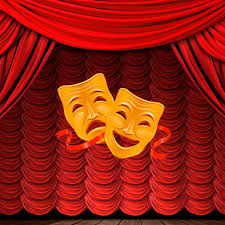Stamp: Makhtumkuli Theater of Music and Drama (Turkmenistan 2006)
Makhtumkuli Theater of Music and Drama (Turkmenistan 2006)
01 January (Turkmenistan ) within release Architecture of Turkmenistan goes into circulation Stamp Makhtumkuli Theater of Music and Drama face value 3,000 Turkmenistani manat
| Stamp Makhtumkuli Theater of Music and Drama in catalogues | |
|---|---|
| Michel: | Mi: TM 199 |
Stamp is horizontal format.
Stamp from mini sheet.Also in the issue Architecture of Turkmenistan:
- Stamp - Arçabil Hotel face value 5,000;
- Stamp - Central Bank of Turkmenistan face value 3,000;
- Stamp - Independence Monument face value 5,000;
- Stamp - Makhtumkuli Theater of Music and Drama face value 3,000;
- Stamp - Monument of Akhal-Teke Horses face value 3,000;
- Stamp - Monument of Neutrality face value 5,000;
- Stamp - Ruhyýet Palace face value 3,000;
- Stamp - Saparmurat Hajji Mosque face value 3,000;
- Stamp - Supreme Court of Turkmenistan face value 3,000;
- Stamp - Turkmen Museum of Fine Arts face value 3,000;
- Stamp - Türkmenbaşy Ruhy Mosque face value 3,000;
- Stamp - Türkmengaz Headquarters face value 5,000;
Stamp Makhtumkuli Theater of Music and Drama it reflects the thematic directions:
Architecture (Latin architectura, from the Greek ἀρχιτέκτων arkhitekton "architect", from ἀρχι- "chief" and τέκτων "builder") is both the process and the product of planning, designing, and constructing buildings and other physical structures. Architectural works, in the material form of buildings, are often perceived as cultural symbols and as works of art. Historical civilizations are often identified with their surviving architectural achievements.
A fountain, from the Latin "fons" (genitive "fontis"), meaning source or spring, is a decorative reservoir used for discharging water. It is also a structure that jets water into the air for a decorative or dramatic effect.
Theatre or theater is a collaborative form of performing art that uses live performers, usually actors or actresses, to present the experience of a real or imagined event before a live audience in a specific place, often a stage. The performers may communicate this experience to the audience through combinations of gesture, speech, song, music, and dance. It is the oldest form of drama, though live theatre has now been joined by modern recorded forms. Elements of art, such as painted scenery and stagecraft such as lighting are used to enhance the physicality, presence and immediacy of the experience. Places, normally buildings, where performances regularly take place are also called "theatres" (or "theaters"), as derived from the Ancient Greek θέατρον (théatron, "a place for viewing"), itself from θεάομαι (theáomai, "to see", "to watch", "to observe").



